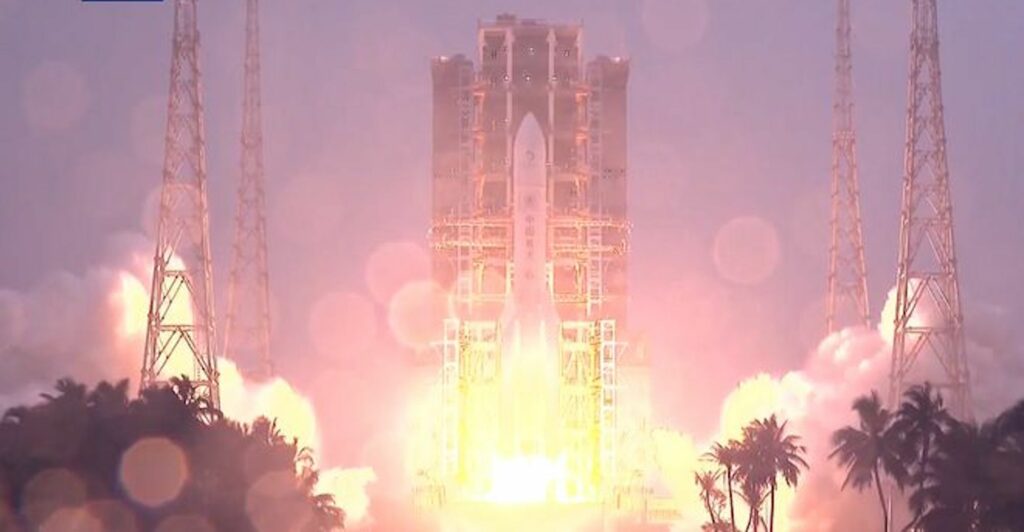According to China’s national television station CCTV, the China National Space Administration announced that at 17:27 on May 3rd, the Chang’e-6 probe was successfully launched by the Long March 5B rocket at the Wenchang Space Launch Site in China, accurately entering the Earth-Moon transfer orbit, and the launch mission was successfully completed. The Chang’e-6 probe has started the world’s first journey to sample the far side of the moon, with the preselected landing and sampling area being the South Pole-Aitken Basin on the far side of the moon.
It is reported that the entire process of the Chang’e-6 mission from launch to sample return will take approximately 53 days. The mission cycle is long, there are many engineering innovations, the risk is high, and the difficulty is great, with each stage being interlinked.
In addition, the Chang’e-6 mission has carried out practical international cooperation. In April 2019, the China National Space Administration announced the “Chang’e-6 Mission International Payload Cooperation Opportunity Announcement”. After soliciting and selecting suggestions for two batches of international payload projects, the European Space Agency’s lunar surface negative ion analyzer, the French lunar radon detector, the Italian laser corner reflector, and the Pakistani cube star were finally selected as the four international onboard projects. Among them, the European Space Agency’s lunar surface negative ion analyzer will detect negative ions on the lunar surface and study the interaction mechanism between plasma and the lunar surface; the French lunar radon detector aims to carry out in-situ detection of lunar surface radon isotopes, studying the transmission and diffusion mechanism of volatiles in the lunar environment; the Italian laser corner reflector plans to use its position on the far side of the moon to carry out joint ranging and positioning research with other lunar exploration missions; the Pakistani cube star will carry out on-orbit imaging missions to verify nano-satellite lunar orbit detection technology.
On May 3rd, the China National Space Administration held an international payload seminar for the Chang’e-6 mission in Haikou. About 50 international friends from 12 national space agencies, embassies in China, and international organizations such as the United Nations and the European Space Agency gathered in Hainan to discuss cooperation and witness the launch of the Chang’e-6 mission.
The Long March 5 rocket is China’s first new-generation heavy-lift launch vehicle with a core stage diameter of 5 meters. It is about 57 meters long, has a takeoff weight of about 870 tons, a takeoff thrust of over 1000 tons, a near-Earth orbit carrying capacity of up to 25 tons, and a geosynchronous orbit carrying capacity of up to 14 tons. It completed its maiden flight in 2016. Due to the changing relative position between the Earth and the Moon, to ensure the timely launch of the rocket, the model team used the “narrow window multiple orbit” launch technology, designing 10 moon-bound orbits within a 50-minute window on two consecutive days, to increase the probability and reliability of implementing the launch. At the same time, the development team continuously optimized the launch site process, reducing it from nearly 60 days when launching Chang’e-5 to 43 days. This is the 519th launch of the Long March series of launch vehicles.
The lunar exploration project is led and implemented by the China National Space Administration. In this Chang’e-6 mission, the overall project is undertaken by the Lunar Exploration and Space Engineering Center of the China National Space Administration; the detector and launch vehicle are respectively developed by the China Academy of Space Technology and the Academy of Launch Vehicle Technology of China Aerospace Science and Technology Corporation; the launch, tracking and recovery work is coordinated by the Wenchang Space Launch Site, Beijing Aerospace Flight Control Center, Xi’an Satellite Measurement and Control Center, Yuanwang Survey Ship, and Jiuquan Satellite Launch Center; the ground application system is mainly undertaken by the Chinese Academy of Sciences.
SEE ALSO: Richard Yu Steps Down as CEO of Huawei Consumer BG
Sign up today for 5 free articles monthly!
>>> Read full article>>>
Copyright for syndicated content belongs to the linked Source : Pandaily – https://pandaily.com/china-successfully-launched-chang-e-6-probe/
